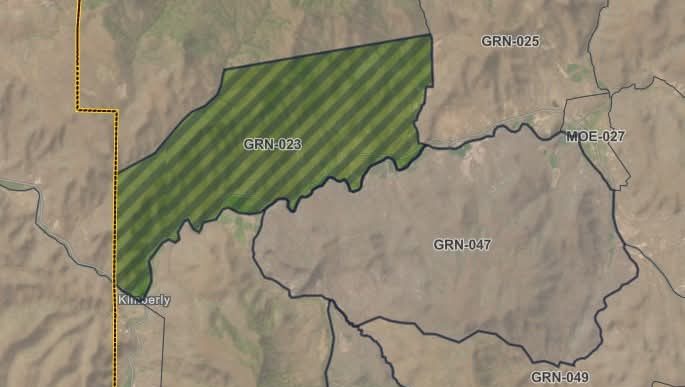The natural world: A brief history lesson in salmon, trout names
Published 7:00 am Saturday, November 6, 2021

- Dennis Dauble
Imagine yourself as a naturalist, two centuries ago, when up to 20 million Pacific salmon and steelhead returned annually to spawn in the Columbia River Basin.
Trending
Several species of resident trout also ranged throughout the Columbia and Snake rivers and their tributaries at the time. How would you describe these strange and wonderful fish when only one species, the rainbow trout of eastern Russia (Salmo gairdneri), had previously been accounted for?
Journal passages from the 1805 Lewis and Clark Expedition alluded to five different salmon and trout west of the Rocky Mountains. Included in their list were “salmon” (chinook salmon), “white salmon-trout” (coho or silver salmon), “salmon-trout” (steelhead/rainbow trout), “red charr” (possibly sockeye salmon), and “speckled” or “mountain trout” (cutthroat trout). Other salmon and trout species were either scarce or the explorers failed to recognize them as different.
For example, there was no mention of pink or chum salmon when both are seasonally abundant in coastal waters. In their defense, Lewis noted on March 2, 1806, “I have no doubt there are many other species of fish … which we have not had the opportunity of seeing.”
Trending
In contrast to how newly discovered plants and animals were saved for further study, early naturalists had no means to preserve fish specimens. William Clark, the principal mapmaker and illustrator of the Expedition, made sketches of only two of 11 fishes encountered in western waters: the eulachon or Columbia River smelt, and “white salmon trout.” Rarely were any measurements taken.
Only when the U.S. Exploring Expedition conducted surveys to determine the most feasible route for a transcontinental railroad did thorough description of salmon and trout of the Pacific Northwest take place. Consequently, the taxonomy of various trout and salmon species remained in flux through most of the 19th century.
Approximately 50 species of western trout were initially catalogued by early naturalists. The renowned ichthyologist, George Suckley, in an 1861 treatise titled, “On the North American Species of Salmon and Trout,” managed to pare the list down to 43. Of that group, rainbow trout were tagged with a total of 25 different scientific names! Attributing a new species name to a locale or a person helped keep them straight.
Early taxonomic methods focused on visual characteristics such as body size, the counting of fin rays and gill rakers, and color, including spotting patterns. Male and female salmon (what anglers term a “buck” and a “hen”) were sometimes thought to be different species, as were juvenile forms and fish that changed their color or size of jaw at spawning time. Consider another journal entry from Lewis and Clark: “in this neighborhood we have met with another species which does not differ from the other in any particular except in the point of colour.”
Fast forward to 1989 when a committee of fisheries scientists took advantage of newly discovered genetic evidence to recommend the seven species of Pacific salmon and trout we know today be combined into a single genus, Oncorhynchus. Genetic evidence emphasizes evolutionary relationships rather than physical appearance. Concurrently with this finding, Oncorhynchus mykiss was chosen as the scientific name for both the North American and the Asian, or mikizha, form of steelhead/rainbow trout.
Interestingly, the current classification scheme ignores a pronounced difference between Pacific salmon and Pacific trout. For example, all five species of Pacific salmon (chinook, coho, sockeye, pink, chum) die after they return from the sea to spawn, while the two species of Pacific trout (rainbow and cutthroat), hybridize with each other, may or may not migrate to the sea, and can spawn more than once (i.e., are iteroparous).
The logic behind Lewis and Clark’s moniker “salmon trout” for steelhead is easy to reconstruct. After all, isn’t a steelhead a large trout that acts like a salmon? What about the “white salmon trout?” At the time of Lewis and Clark, coho salmon were abundant throughout the Columbia River Basin. Coho spawn rear in tributary streams and juveniles remain in fresh water for one or two years. These attributes mimic the life history and behavior of steelhead where the two species overlap. My best guess is the characteristic white gum line of coho salmon triggered the thought to these explorers.
Not to be forgotten is the “salmon” of Lewis and Clark, no doubt the most important fish they encountered. The Canadian explorer David Thompson also used the term to describe chinook salmon when he traveled through the mid-Columbia region in 1812, often adding “small salmon” to his notes as a distinction.
Science advances when new ways of thinking and innovative techniques are applied to age old problems. Consider the words of the French biologist Charles Girard, “the method I follow is the natural, the true method, that which has superseded the artificial method of the last century.”
Not the case, it seems, 150 or so years later.









